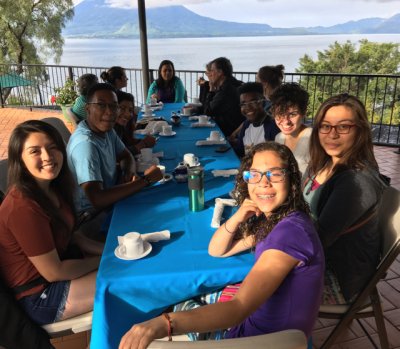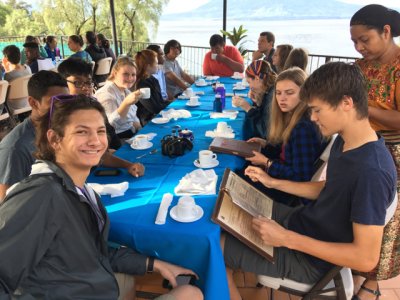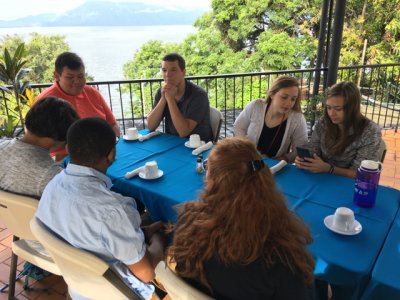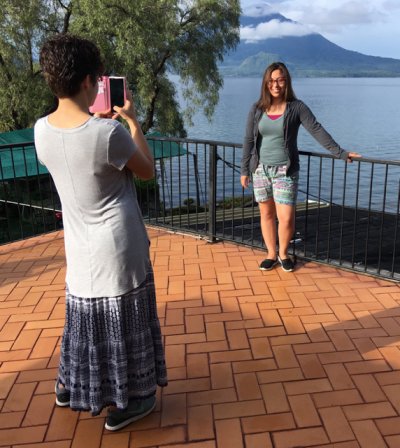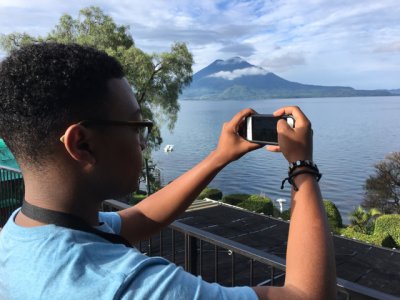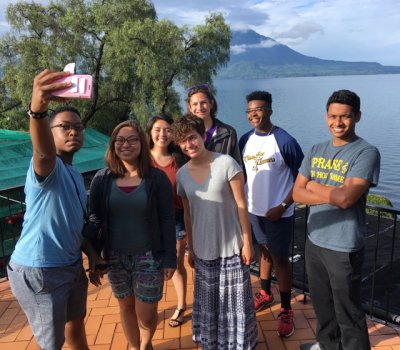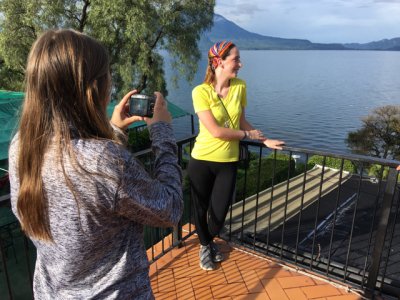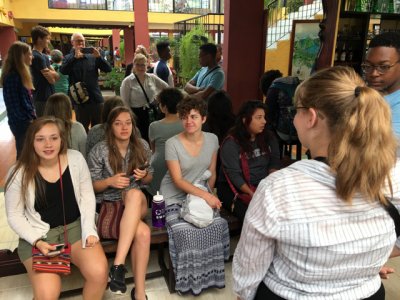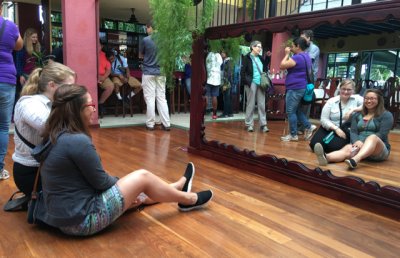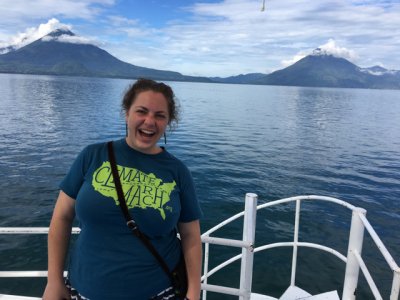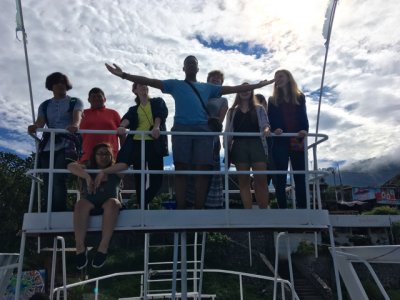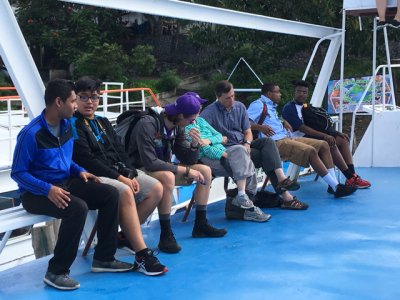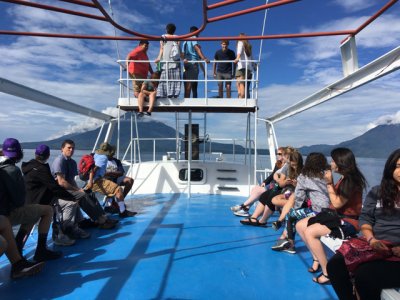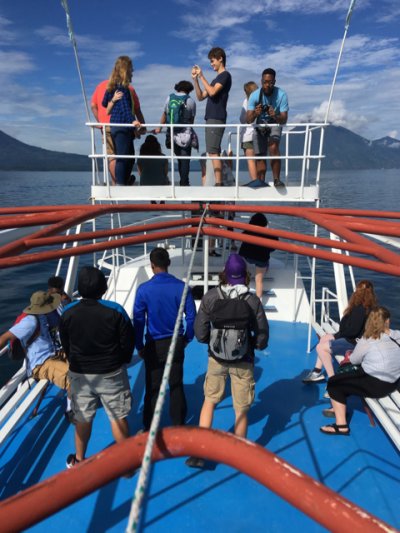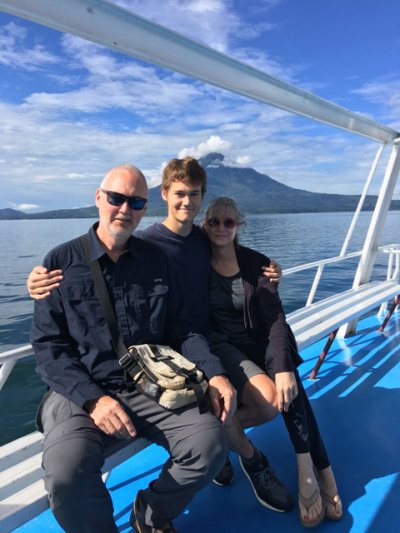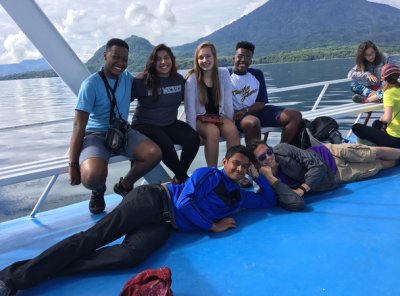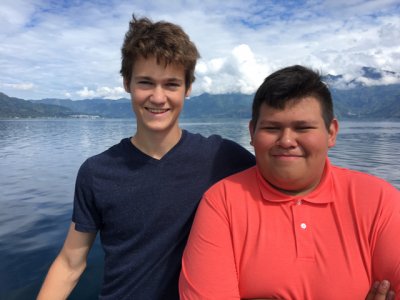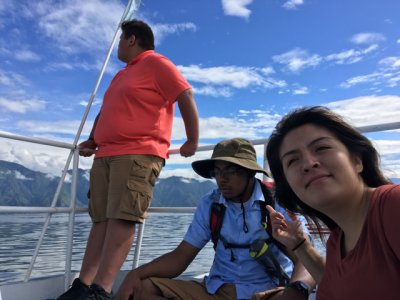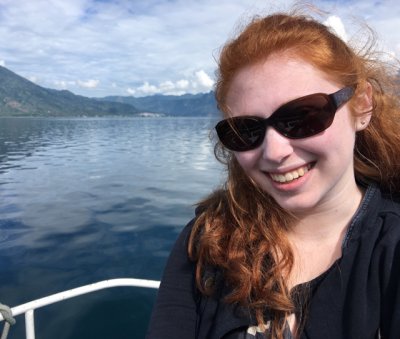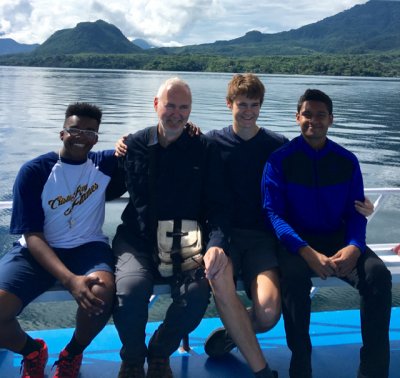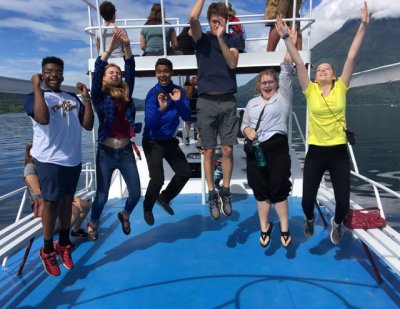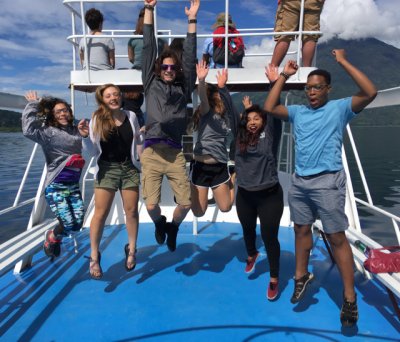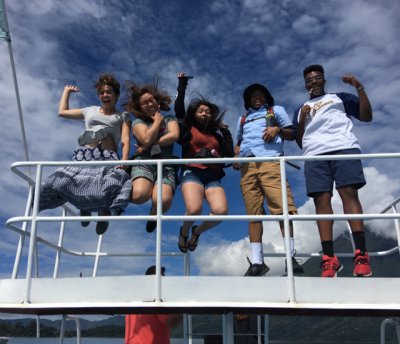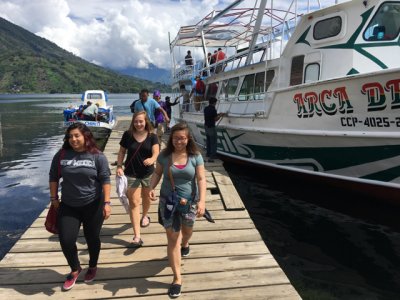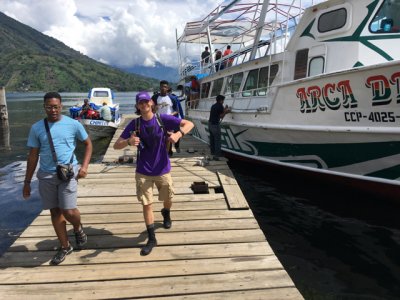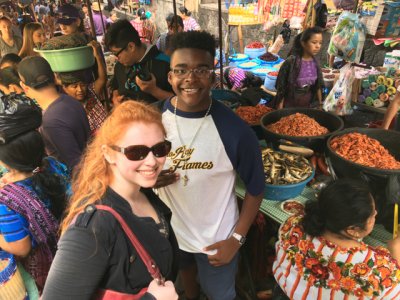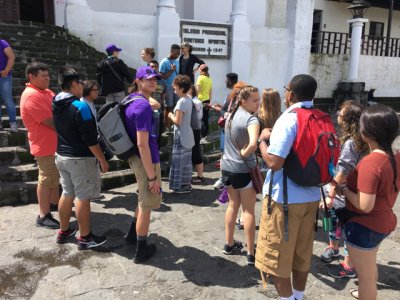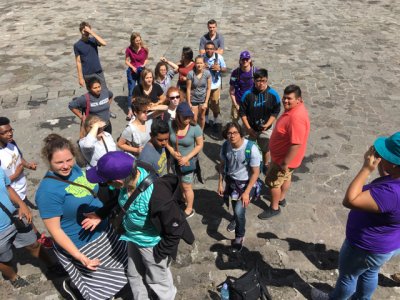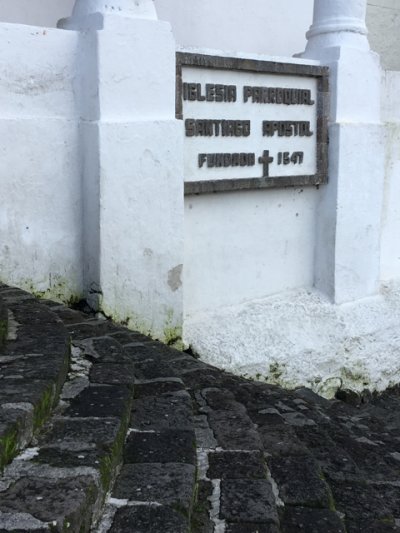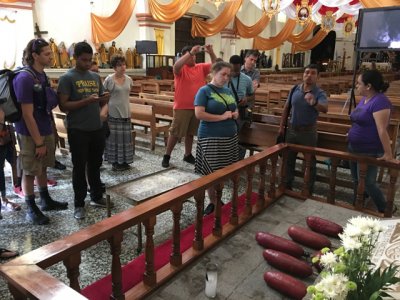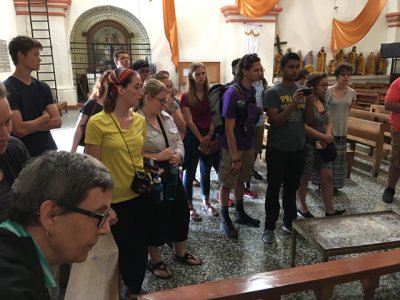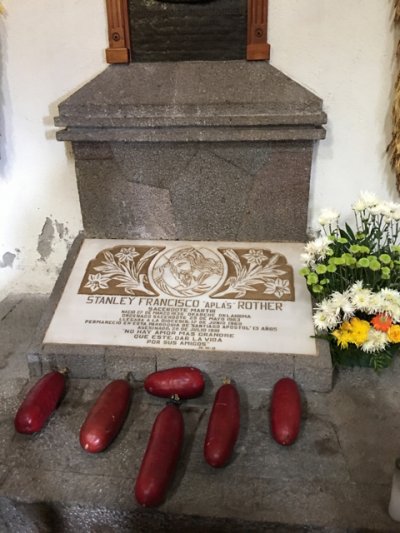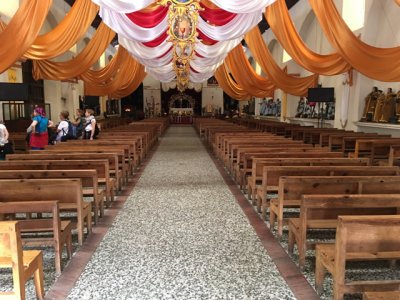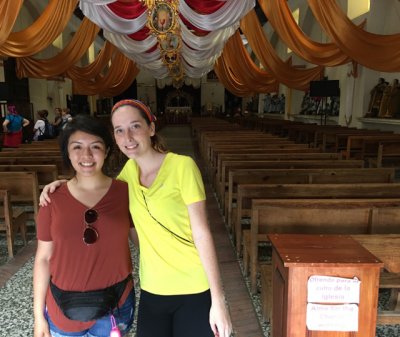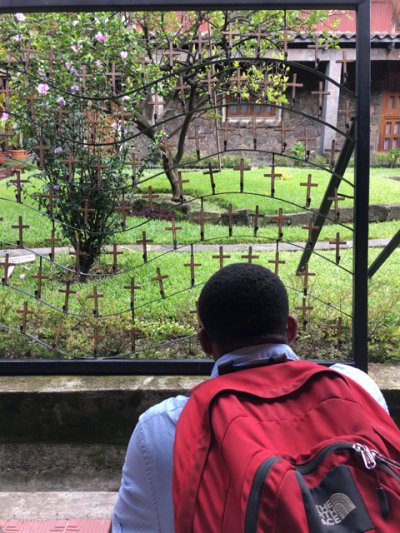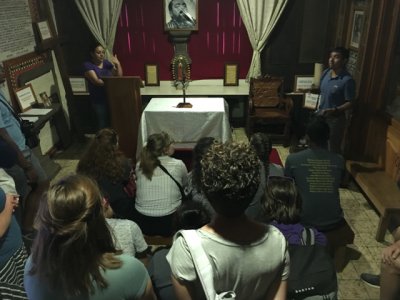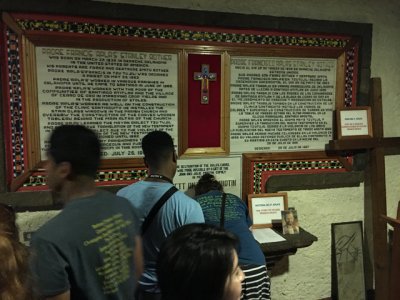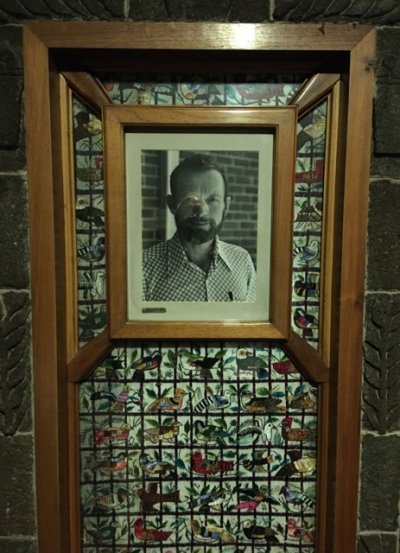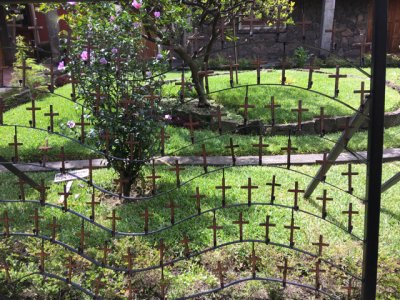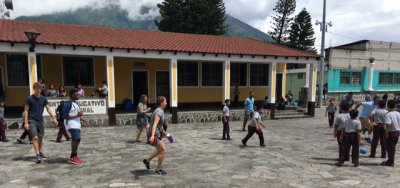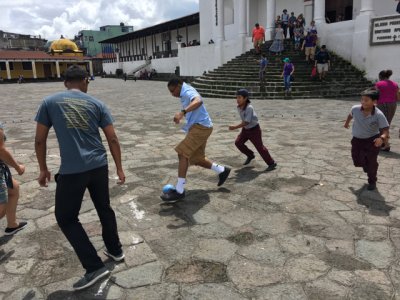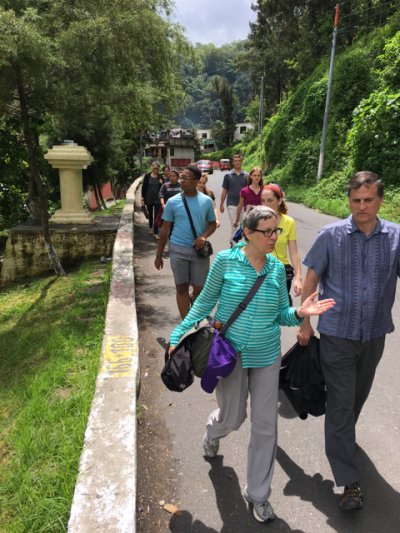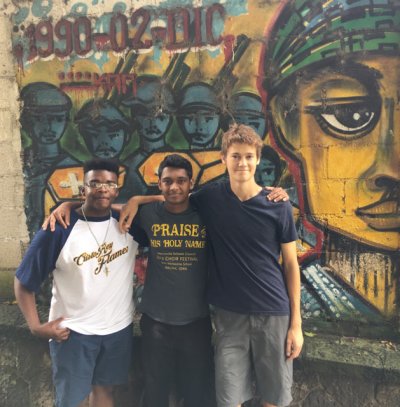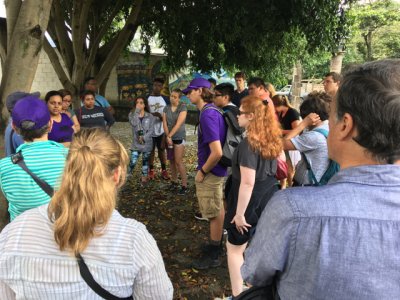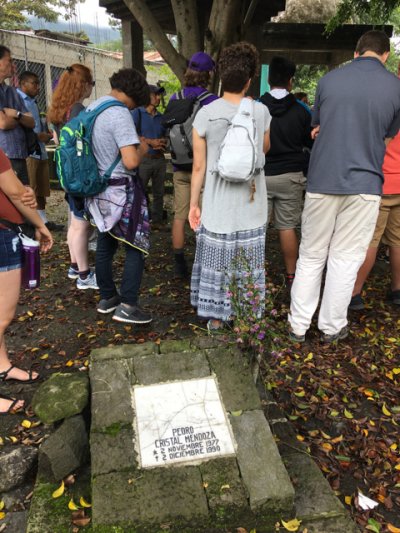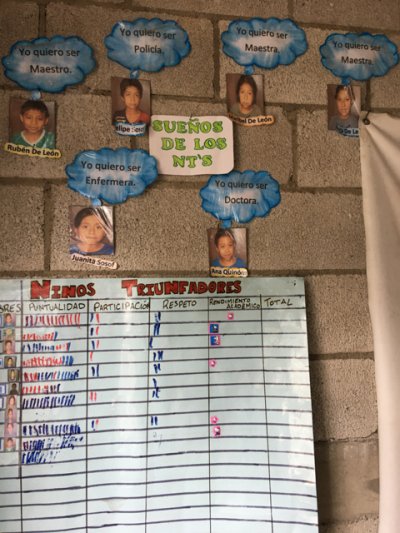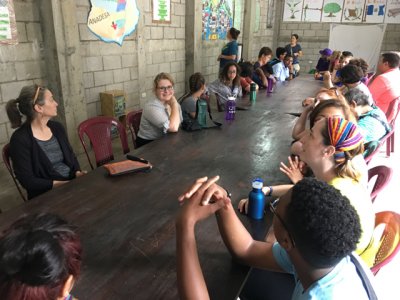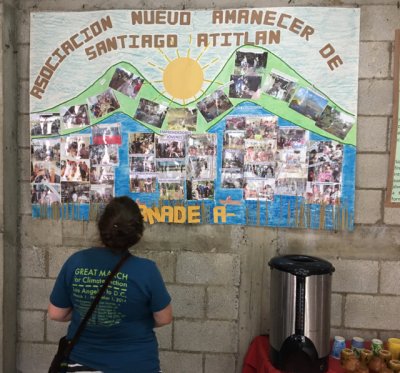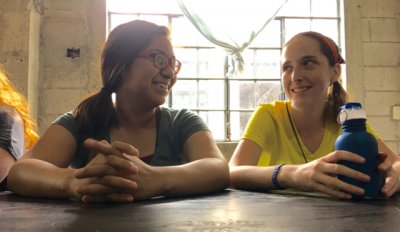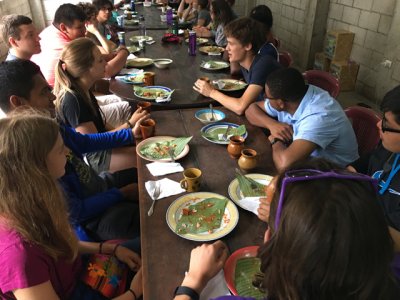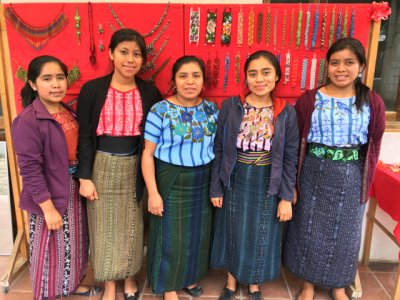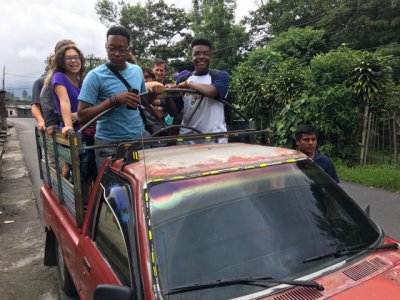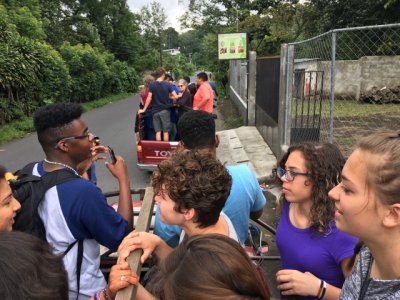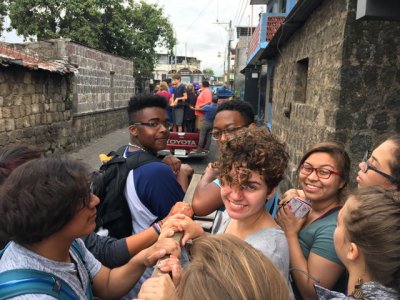Day Five, Part I: Boat Ride and Santiago Atitlan
This is the second of three blog posts we’re putting up tonight, given the many experiences we had on our three-day trip and the many photos we took depicting those encounters.
Friday began with an extraordinarily good breakfast at a restaurant overlooking gorgeous Lago Atitlan, which is surrounded by several active volcanoes. Group members took turns taking photos in this incredible spot, and then we headed down to our boat for an hour-long trip from Panajachel to Santiago Atitlan. The day was beautiful, so we enjoyed interacting on the top deck before landing in Santiago and walking first to Iglesia Parrochial Santiago Apostol, a Catholic Church founded in 1547.
One of the main purposes for the church visit was to see the monument for Father Stanley Francisco “Aplas” Rother, who was killed by government militia men July 28, 1981, for caring for the people of his community in the midst of Guatemala’s civil war. He was shot in his study, where there is now a small museum at the church. Just outside the study is a candelabra with 200 crosses with the names of many of the other church and community leaders killed in the region during the civil war. The Catholic Church is now in the process of canonizing Father Rother as a saint. The visit was quite moving for many of us, and brought close to home the tragedy of the 36-year civil war, which didn’t end until 1996.
Following that visit, some of the SSTT Scholars played soccer with local children in the church yard before we headed off to Asociacion Nuevo Amanecer de Santiago Atitlan (ANADESA), which is in Panabaj, a Tz’utuhil town 1 kilometer from Santiago Atitlan. On the way to ANADESA, we toured the Peace Park established by the community after government soldiers killed 13 people December 2, 1990, after local leaders had demanded their rights from the soldiers. Those killed when soldiers opened fire included a 5-year-old and a 13-year-old child. The Peace Park also is dedicated to those killed or made homeless by a massive mudslide that occurred when Hurricane Stan struck in 2005.
After reflecting in the Peace Park, we moved on to ANADESA, which was formed after Hurricane Stan. ANADESA, which is now supported partly by Mennonite Central Committee, has a children’s education program, a youth program, and a women’s program. In the latter, women are empowered for their lives at home and taught to do beadwork, weave, prepare food and attend to visiting groups. We had an enormous snack at ANADESA and then had the opportunity to purchase some of the beadwork crafted by the 18 to 20 women who are part of the organization’s program.
With all of the organizations we visited during this three-day tour, we were immensely impressed with the resilience of the people we encountered, and their ability to pull together as collaborative communities to better their lives. It was clear that God was at work in these communities of support and faith.
